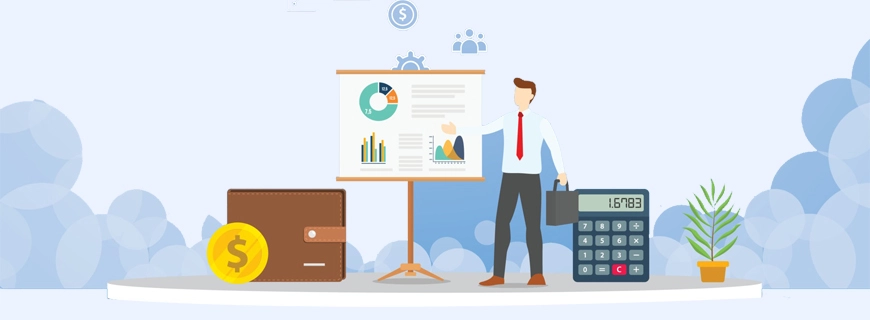
Organising
Great things are not done by impulse, but by a series of small things brought together.
– Vincent Van Gogh
Introduction
The key to creating a well-organized speech or presentation is to keep your audience in mind. Start with something that will capture their attention and give them a clear idea of your topic.
Organize the body of your presentation in a way that will be easy for your audience to understand. Plan to review your main points briefly and then wrap things up on a positive note, perhaps giving your audience a “call to action.”
The essential thing to remember is that you are giving your presentation for the benefit of your audience. That means you need to organize it in a way that will make sense to them. The most important thing to keep in the forefront of your mind is that you are not making the speech for yourself, but your audience.
Think of how politicians do things. When they are campaigning they will speak to groups as diverse as different occupations, different ethnicities, and different ages. How they will speak to each changes between speeches. Then, when they are speaking to a cabinet meeting of fellow politicians, the language and the issues will be different again. Keep this in mind when giving a presentation.
Organising For Making the Presentation Easy
Some thoughts on the basic parts of a presentation:
Opening. Some speakers like to start a presentation with a joke. Sometimes this works. It starts on a light note and puts the audience at ease. Buy many people do not tell jokes well. If a presentation starts with something that doesn’t work, the audience will start to question your ability as a speaker. Other ways to start include asking a rhetorical question, giving people a surprising statistic, or telling a brief anecdote that is related to the topic of the presentation.
Body. The next two activities will address the body of a presentation.
Review. Many speakers skip this step, but it can be worth including. Chances are that some members of the audience didn’t get the few key points you want them to take away from the presentation. Restate these key points briefly for the sake of those who were “tuned out” the first time you made them.
Closing. Restate the main point of your presentation. In some cases, you may want to give people a “call to action.”
Obviously, the longer a presentation goes on the more chances there are to lose the attention of your audience. However, making a presentation too short can leave people uninformed and dissatisfied with the body of the presentation. It is therefore essential to structure your presentation correctly, allowing enough time to give it a powerful opening which will draw listeners in, a strong middle which will hold that attention and give them all the facts, and a closing section which reinforces what they were told and gives them an idea about what action needs to be taken to back it all up.
All these parts need to be present, and each needs to be weighted correctly according to the amount of time you have available to you. It may well be the case that in order to attend a presentation people are taken away from doing their “normal” job.
Such demands on a person’s time will reflect in how they view the presentation and how much of their attention they give it.
The amount of time you give to each section of a presentation will therefore be governed by how much time you have overall and how much of that time will be necessary to get all of your substantive points across. If your presentation is in danger of running over time, it will be necessary to trim it in places, beginning with any extraneous detail.
Remember that most presentations will be followed up by a pick-up session of sorts, where individual questions can be dealt with. The presentation itself is where larger issues are raised and answered.

Organizational Methods
It’s important to realize that most people will be able to remember only a few key points from a presentation. Don’t overwhelm the audience with facts that they will forget as soon as they walk out the door. Focus on a few key points.
It’s a good idea to write your key points on a flip chart or show them on a slide. That will help your audience understand how your presentation is organized. If you return to your flip chart page or slide when you move on to a new key point, the audience will be able to see where you are in your presentation.
As well as this, at the close of a presentation you can then go, one by one, through the key points that you have made. Making a point coherently consists of three steps: introduction, substance, and reinforcement. If you want the audience to leave your presentation with a certain point locked in their minds, then it is essential that you address all three of those steps.
Whichever way you choose to organize the body of your presentation, it is important to keep the elements of it down to a manageable number. Taking one of the above as an example, we will look at how a “Problem/Solution” style of presentation can best be cut down into a few manageable steps.
An organization may have any number of problems which it wishes to address. If there are, say, fifteen problems that it wants to get to the bottom of it, covering all of these in a presentation results in the problem that fifteen of anything is a large number to remember.
In order to ensure that the presentation does not result in an audience being bemused by the sheer number of problems, it is advisable if you can to find a category for each problem, whether it be “time”, “manpower”, “finance” or another suitable category.
Your intention should be to find a few category headings which can cover a few problems each. If these problems require more time, this can best be covered by a meeting where the attendees are all people who have experience in the specific field where problems exist.
Any presentation will benefit from this kind of organization. One thing worth remembering is that the “rule of three” is adhered to by most people, if not consciously then certainly subconsciously. Therefore if you can keep concentrated discussion to around three headings – or a maximum of five – then you will be able to retain attention much better than if you have a numbered list which never seems to end. You can always, after all, emphasize the key points at the end of the presentation.
Grouping & Sorting
Categorizing information is one way that people make sense of complex topics. A speaker can help people come to grips with complex topics by breaking them down into a few categories.
If participants have trouble thinking of things to consider in a health insurance plan, you can make a few suggestions:
Cost:
- Payroll deductions
- Copayments
- Cost of prescriptions
Coverage:
- Hospitalization
- Emergency room visits
- Coverage when traveling
- Annual physicals
- Routine doctor’s visits
Choice:
- Referral requirements
- Network restrictions (doctors)
- Network restrictions (hospitals)
One key benefit of doing this is that you can take a highly complicated topic and break it down into smaller areas, which benefits members of your audience who may specialize in a certain area. The areas in which they do not specialize will not be a signal to turn off, but an opportunity to learn more about that specific area, allowing a “joined-up” process to have greater success within the organization. The areas in which they do specialize are an opportunity for them to listen, evaluate, and potentially contribute suggestions which may benefit everyone in future.
Additionally, the introduction of smaller topic areas allows the brain to process information in more manageable “chunks”. Rather than trying to make sense of a topic which seems monolithic in size and importance, cutting it down into smaller pieces allows the individual to mentally breathe in between those sections.
Think of it as being like a journey. If you were to travel from one tip of Africa to the other in one go, you would be exhausted and unwell at the end of it. If, on the other hand, you include stopping-off points and rest breaks, you will allow yourself to recover and galvanize yourself for the journey ahead.
This approach applies in the healthcare example detailed above, but also in several other areas. A broader topic can be split down into more specific topics, which in themselves can potentially be split into more, even hyper-specific areas depending upon the audience you are dealing with. It is also essential not to overdo this.
By splitting down a topic repeatedly you can end up with so many chunks that the constant changing leads to a presentation losing its momentum. A balance between over-complication and over-simplification is essential. If you get it right in the middle, the presentation will flow naturally.
Practical Application
Danielle sat down with her manager, Catherine, to discuss her presentation. Catherine said, “Danielle, you kept your audience’s attention. Your jokes were well timed, and you had a way of getting back to the agenda whenever the audience seemed to be moving off track.”
Danielle smiled. “Thanks, Catherine. I appreciate the compliment.”
Catherine said, “But every presentation can improve somehow, right? One thing I noticed was that your PowerPoint slides had several key points, instead of just a few. I think it caused the audience some confusion.”
Danielle said, “What do you think I should do next time?”
Catherine said, “Remember the ‘rule of three.’ Most people can remember a few, about three, main points. Narrow down what you think is most important beforehand.”
Danielle used this strategy, and her next PowerPoint presentation was cleanly organized and broken down into only a few key points for the audience.





